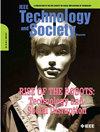敏捷edbr:融合工业和学术实践
IF 1.9
4区 工程技术
Q3 ENGINEERING, ELECTRICAL & ELECTRONIC
引用次数: 0
摘要
本文介绍了AgileDBR,这是一个新的/新颖的混合框架,它将敏捷项目管理与基于设计的研究(DBR)集成在一起,以克服这两种方法中的挑战。敏捷专注于计划、执行和评估的迭代周期,而DBR用于学习科学,涉及设计和测试解决特定问题的干预措施。AgileDBR框架在研究生计算教育(PGCE)的一个案例研究中得到了应用,突出了它在透明度、可伸缩性以及通过过程、实践和产品(工件)进行协作方面的优势。通过将敏捷的结构化、有时限的迭代与DBR的系统和灵活的研究过程结合起来,AgileDBR在应对COVID-19造成的中断方面特别有效。为了说明问题,案例研究展示了AgileDBR的适应性——由像视觉研究画布和测试学习卡这样的方法工具支持——以促进研究枢纽和增强文档。这项研究的结果展示了AgileDBR的好处,通过文档化的迭代协作项目管理过程、实践和可视化工具,使研究过程高效、透明、可适应和可伸缩。本文章由计算机程序翻译,如有差异,请以英文原文为准。
AgileDBR: Blending Industry and Academic Practice
This article introduces AgileDBR, a new/novel hybrid framework that integrates Agile project management with design-based research (DBR) to overcome challenges in both methodologies. Agile focuses on iterative cycles of planning, execution, and evaluation, while DBR, used in learning sciences, involves designing and testing interventions to address specific problems. The AgileDBR framework is applied in a case study within postgraduate computing education (PGCE), highlighting its advantages in transparency, scalability, and collaboration through processes, practices, and product (artefact). By aligning Agile's structured, time-bound iterations with DBR's systematic and flexible research process, AgileDBR proved particularly effective in responding to disruptions caused by COVID-19. The case study, for illustrative purposes, demonstrates AgileDBR's adaptability-supported by methodological tools like the Vision Research Canvas and Test and Learn Cards- to facilitate research pivots and enhanced documentation. The outcome of this study showcases the benefits of AgileDBR making the research process efficient, transparent, adaptable, and scalable through documented iterative collaborative project management processes, practices, and visual tools.
求助全文
通过发布文献求助,成功后即可免费获取论文全文。
去求助
来源期刊

IEEE Technology and Society Magazine
工程技术-工程:电子与电气
CiteScore
3.00
自引率
13.60%
发文量
72
审稿时长
>12 weeks
期刊介绍:
IEEE Technology and Society Magazine invites feature articles (refereed), special articles, and commentaries on topics within the scope of the IEEE Society on Social Implications of Technology, in the broad areas of social implications of electrotechnology, history of electrotechnology, and engineering ethics.
 求助内容:
求助内容: 应助结果提醒方式:
应助结果提醒方式:


